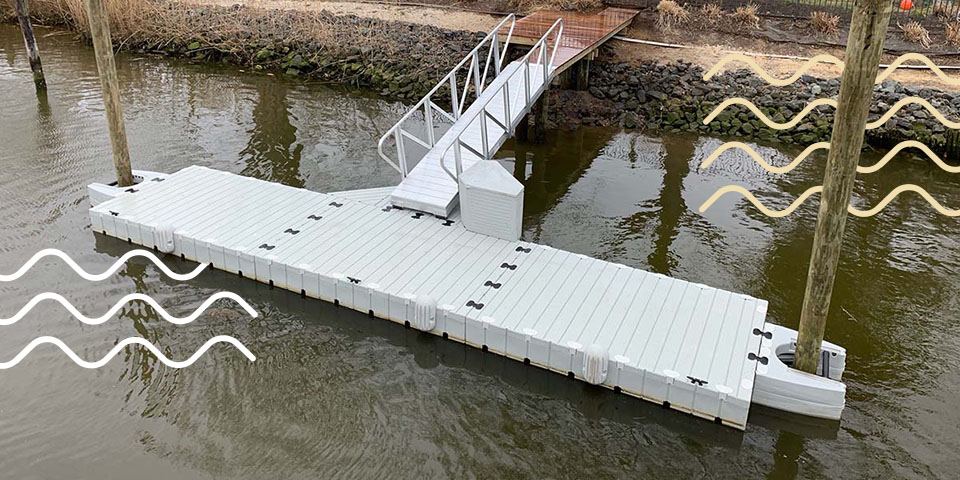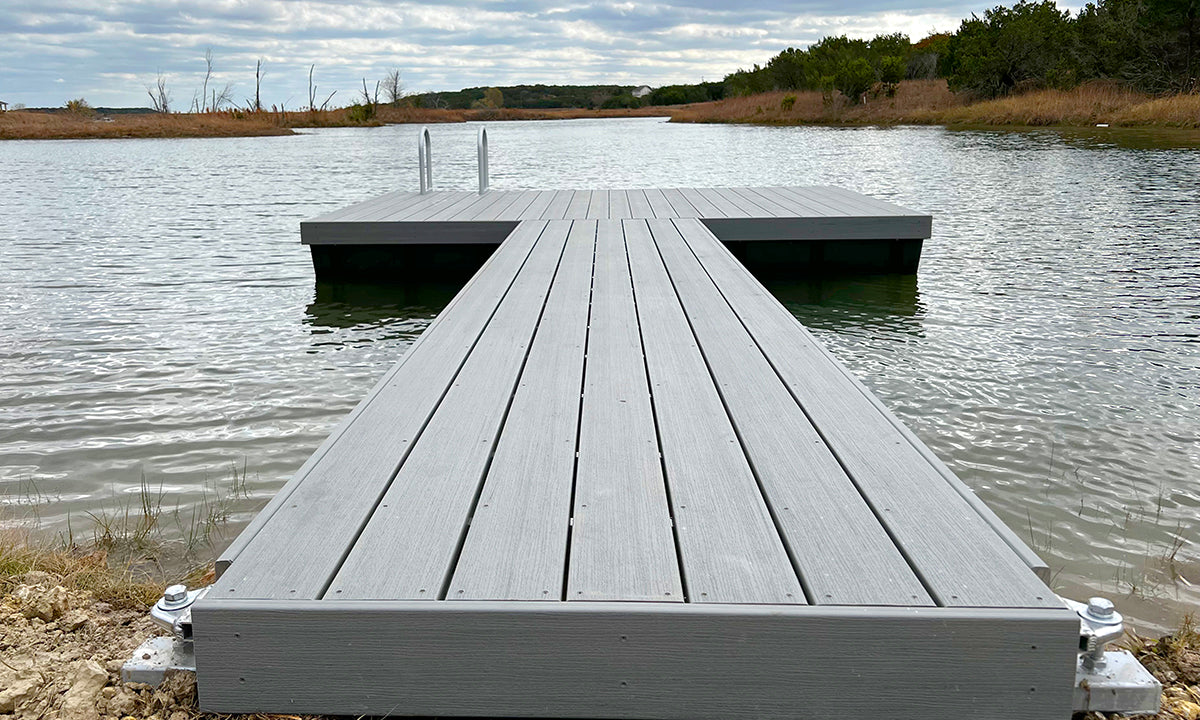Your Overview to Locating the Best Dock Company for Quality and Reliability
Develop the Perfect Docking Remedy With Floating Docks
Floating docks present a versatile option for a selection of maritime needs, adjusting perfectly to changing water levels and diverse vessel kinds. As we discover the crucial elements that add to the effectiveness of floating docks, a number of essential variables relating to stability and upkeep will emerge, increasing concerns about how to maximize your docking experience.

Benefits of Floating Docks
Floating docks offer numerous benefits that make them an excellent option for different maritime applications. One of the key benefits is their versatility to changing water levels. Unlike taken care of docks, floating docks fluctuate with the trend, making certain consistent accessibility for vessels. This feature is particularly important in areas prone to substantial tidal variations or seasonal water degree modifications.
Additionally, floating docks are generally easier and quicker to set up contrasted to conventional set frameworks. Their modular design permits straightforward setting up and disassembly, promoting upkeep and relocation when essential. This versatility is especially beneficial for short-lived applications or in atmospheres where conditions might change.
Floating docks additionally have a tendency to be more eco friendly, as they minimize interruption to the seabed and surrounding marine communities. Their resilient nature minimizes the risk of damages to aquatic life, promoting a much healthier environment. In addition, these docks can be tailored to accommodate numerous vessel sizes, making certain that they meet certain operational requirements - floating dock services.
Inevitably, the combination of versatility, convenience of installation, and environmental factors to consider makes floating docks a highly efficient remedy for a wide variety of maritime needs.
Selecting the Right Products
Choosing the suitable materials for floating docks is vital to guarantee longevity, security, and longevity. The choice of materials directly impacts the dock's performance in various environmental conditions, including direct exposure to water, sunshine, and possible wear from aquatic website traffic.
Usual products made use of for floating docks include aluminum, timber, and high-density polyethylene (HDPE) Light weight aluminum is light-weight, corrosion-resistant, and calls for marginal upkeep, making it an exceptional option for durability. Its initial cost can be greater contrasted to various other materials.
Wood, while cosmetically enticing and supplying a standard look, can be vulnerable to rot and insect damages otherwise appropriately treated. Consequently, utilizing pressure-treated wood or normally sturdy varieties like cedar or redwood can reduce these concerns.
HDPE is a popular selection because of its resistance to UV rays and chemicals, together with being environmentally pleasant. floating docks. It is offered and lightweight in various shades, allowing for modification
Eventually, the right product choice will rely on certain requirements, including spending plan, preferred aesthetic appeals, and ecological considerations. Mindful assessment of these variables will bring about a resilient and effective floating dock option.
Design Considerations for Security
When creating floating docks, guaranteeing security is a fundamental aspect that can dramatically affect their performance and safety and security. Stability in floating dock style is affected by numerous variables, consisting of buoyancy, weight circulation, and the plan of elements. An ideal buoyancy system need to utilize materials that supply enough lift while reducing weight. This balance makes sure that the dock continues to be above water, even under varying loads.
Weight distribution is essential; evenly distributing loads across the dock prevents tilting and enhances security. This can be attained via critical placement of docking devices, such as fenders and cleats, along with appropriate spacing of drifts. Furthermore, the dimensions of the dock ought to be thoughtfully planned. Bigger layouts can supply boosted security, especially in rough water problems, while longer docks may require additional assistances to stop sagging.
One more key factor to consider is the environmental impact, consisting of wave action and wind. Including functions such as sidewalls or skirting can help minimize the impacts of ecological forces, maintaining security in unfavorable problems. Ultimately, a mix of thoughtful style, product choice, and understanding of ecological elements will certainly produce a drifting dock that satisfies both security and security needs.
Setup Tips and Strategies

Next, secure the necessary permits and abide by neighborhood laws, which might determine setup methods and environmental considerations. Involve a certified specialist experienced in floating dock installations if required. Usage top notch materials designed for aquatic atmospheres to click for source improve resilience and longevity.
When positioning the dock, straighten it identical to the shoreline to facilitate very easy gain access to. Guarantee that the anchoring system is durable, utilizing concrete blocks or helical supports to support the dock against wind and wave activity. It's important to account for seasonal water degree changes, including prospective ice movement in cooler climates.
Throughout the setup, double-check the dock's floatation and security before settling the anchoring. On a regular basis examine the installment for any indicators of wear or damages. By adhering to these ideas and strategies, you can attain a safe and secure, practical, and aesthetically pleasing floating dock installment that satisfies your requirements.
Maintenance and Treatment Standards
Caring and preserving for floating docks is essential to lengthening their lifespan and guaranteeing risk-free use. Normal inspections ought to be carried out to recognize any signs of wear, damage, or marine growth. Try to additional reading find splits, loosened installations, or blemished areas on the dock's surface, as these issues can compromise structural stability.
Cleaning up is necessary. Make use of a stress washing machine to get rid of algae, barnacles, and particles, which can gather over time. For persistent development, consider eco-friendly cleaner that will not damage marine life.
In addition, examine the mooring lines and anchors frequently to ensure they are free and secure from corrosion. Change any kind of torn or harmed lines immediately to preserve security.
Throughout severe climate, such as storms or freezing conditions, take preventive actions. Safeguard the dock with extra mooring lines and, if practical, eliminate any removable parts to stop damage.
Conclusion
In conclusion, the execution of floating docks offers a versatile and effective docking remedy suitable for different maritime applications. With correct setup and normal upkeep, floating docks can give dependable and reliable docking experiences for a wide variety of vessels.
As we check out Learn More the essential aspects that add to the performance of floating docks, a number of key aspects pertaining to stability and maintenance will arise, elevating inquiries about how to enhance your docking experience. Unlike taken care of docks, floating docks surge and fall with the tide, guaranteeing constant access for vessels.When designing floating docks, making sure security is a basic facet that can significantly affect their functionality and security. Stability in floating dock style is affected by various factors, including buoyancy, weight circulation, and the arrangement of elements. Ultimately, a mix of thoughtful design, material choice, and understanding of environmental variables will certainly generate a floating dock that satisfies both stability and safety and security demands.